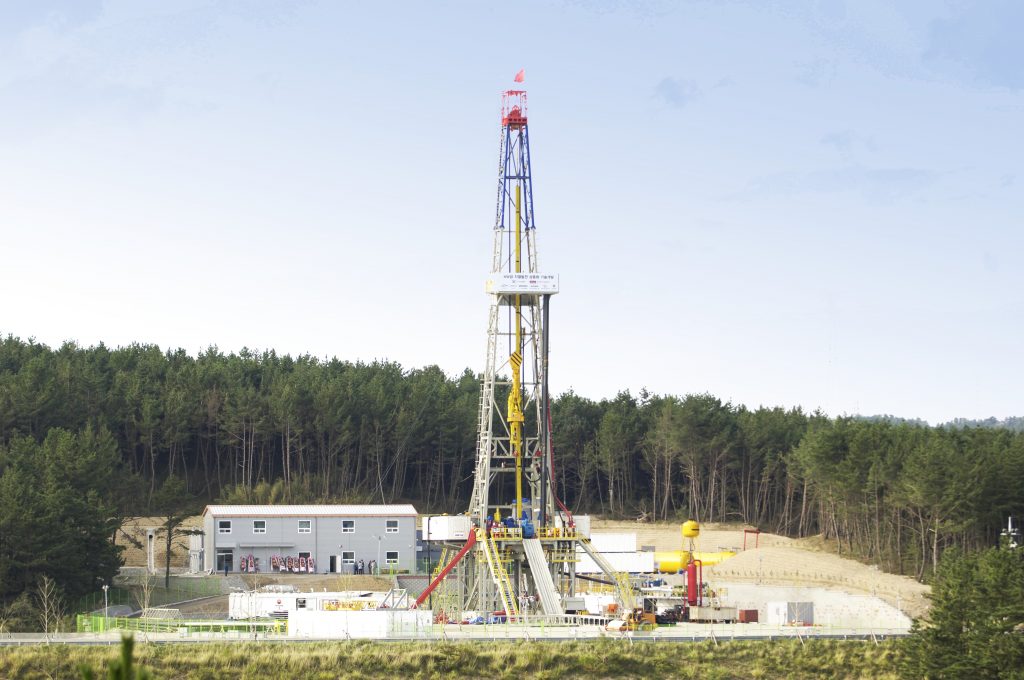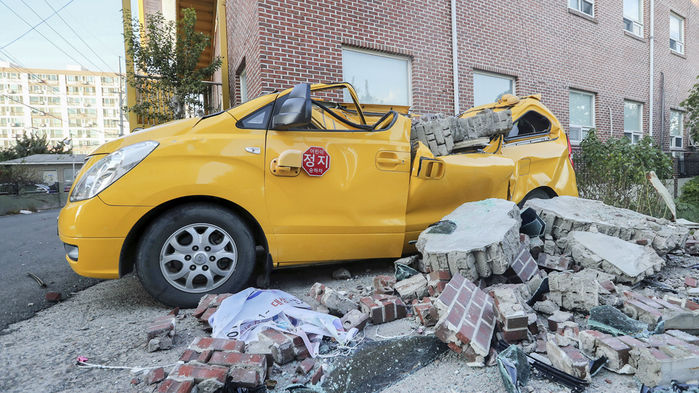By David Jacobson, Temblor
Click here to protect yourself from natural disasters

A damaging earthquake in a seismically quiet area
Last November, South Korea’s most damaging earthquake ever struck the southern port city of Pohang. The M=5.4 event left 90 people injured, and caused $52 million in damage. Now, in two articles published yesterday in Science, the possibility that the quake was induced was explored. The culprit? The nearby Pohang Geothermal Plant.

The Korean Peninsula is typically a seismically quiet area. While there are some local faults, few have ruptured in large earthquakes historically. More specifically, in the area around Pohang, no M=2+ earthquakes were recorded for a period of 37 years between 1978-2015. This all changed following the drilling of two wells at the Pohang geothermal plant.

The Geysers geothermal site in California produced a M=5 shock
At enhanced geothermal systems like the Pohang geothermal plant, injection of fluid into reservoir rocks helps aid in the recovery of oil and gas. Unfortunately, it can also trigger earthquakes as water and steam seep into fault zones, making them more slippery. In one of the papers released yesterday, the team of Korean scientists state that before November’s M=5.4 earthquake, the largest earthquake recorded at an enhanced geothermal system was a M=3.4 in Switzerland in 2006. However, this is not true as there have in fact been larger geothermally-induced earthquakes, including here in the United States.
At the Geysers Geothermal Field, north of the Bay Area, a M=5.0 earthquake struck in 2016. USGS Scientist Emeritus David Oppenheimer told us that “seismic networks typically record about 30 microearthquakes every day at the extensively developed Geysers geothermal field. However, because of its remote location, few quakes have caused significant damage.” Pohang lies much closer to a population center than the Geysers, but in other respects, they are quite similar. According to USGS Geophysicist Art McGarr, even though “Geysers is substantially larger than Pohang, both fields are producing heat and power both by natural geothermal process and more recently, by well stimulation.”
Was the Pohang earthquake induced?
There are many reasons why the earthquake in South Korea is being attributed to industrial activities. Earthquakes were only observed following the drilling of wells, seismicity spikes were seen in the days following fluid injection, and activity decreased when injection did. Furthermore, the depth of the quake, 4.5 km (2.8 mi), is shallow and coincides with the bottom of one of the injection wells. While the paper uses this to emphasize the likely source, USGS scientist Art McGarr believes it is more likely due to the fact that at greater depths, the rock will be too hot, and not brittle enough to rupture. Nonetheless, he did say that such a shallow depth is typical of geothermally-induced earthquakes, including those seen at Geysers. Lastly, when such depths are compared to earthquakes on known faults, including a M=5.4 at 13 km depth on the Yangsan Fault 30 km south of Pohang in September 2016 (14 months prior to Pohang), suspicions are raised.

Are we causing earthquakes or influencing them?
One major point which much be made is that even though there had been no major or minor earthquakes in the Pohang region prior to the drilling of this well, it does not mean that an earthquake in the area was not possible without geothermal stimulation. McGarr pointed out that geothermal areas are tectonically active by nature as magma penetrates the moderately-shallow crust. Therefore, he told us that, “the volcanic processes set the stage for a large earthquake, and the injection to stimulate energy production may have been the straw that broke the camel’s back.” What this means is we cannot create earthquakes in areas where they are not already possible. We can increase the likelihood of their occurrence, but there must be existing structures on which fault rupture can occur.
What these new studies show, echoed by McGarr, is that “you have to be prepared for fairly large earthquake responses when you do injection activities.” Similarly, Oppenheimer told us that, “The evidence that the M=5.4 Pohang earthquake was induced is compelling. However, there will always be a level of uncertainty in predicting if fluid injection will induce earthquakes, and how big those earthquakes might become.”
References
Science
Kwang-Hee Kim, Jin-Han Ree, YoungHee Kim, Sungshil Kim, Su Young Kang and Wooseok Seo, Assessing whether the 2017 Mw 5.4 Pohang earthquake in South Korea was an induced event, Science, 10.1126/science.aat6081 (2018).
F. Grigoli, S. Cesca, A. P. Rinaldi, A. Manconi, J. A. López-Comino, J. F. Clinton, R. Westaway, C. Cauzzi, T. Dahm and S. Wiemer, The November 2017 Mw 5.5 Pohang earthquake: A possible case of induced seismicity in South Korea, Science, 10.1126/science.aat2010 (2018).
- Beware quiet segments of the Philippine Fault - May 16, 2025
-
ډیری عوامل افغاني ټولنې د زلزلې پر وړاندې زیانمنوي
- August 11, 2022 - What’s happening this week in Humboldt County, California: The squeeze - February 6, 2019
